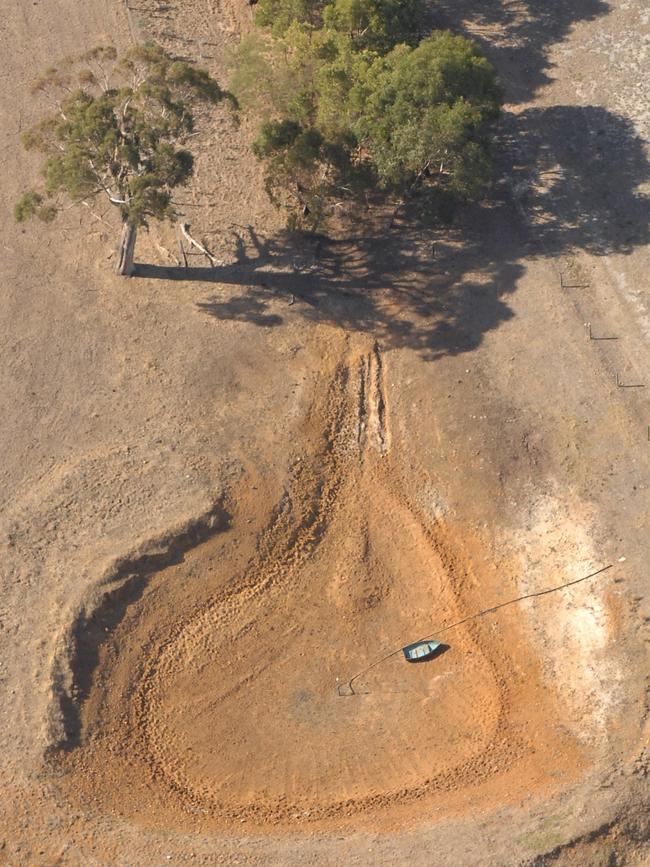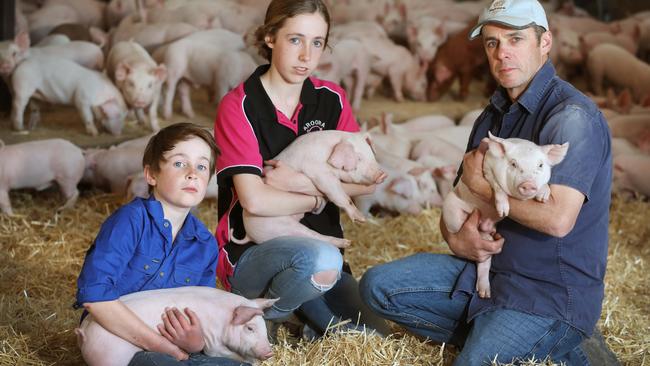Food prices expected to rise in response to nation’s crippling drought
SHOPPERS are urged to continue buying local produce, as farmers face a combination of cheap imports and grocery price rises as the nation’s extended drought starts to bite.
FARMERS are urging consumers to continue buying local produce as they battle a combination of cheap imports, drought and rising grain prices.
Market analysts warn food prices will rise as persistent dry conditions force farmers to buy in feed to keep stock alive, contributing to surging grain prices and shortages.
The pain is expected to be felt by producers for at least another year as the national grain outlook for 2018-19 is 33.2 million tonnes — nine per cent below the 20-year average.
Australian Farm Institute executive director Richard Heath said it was difficult to predict which food products would increase, when and by how much.
However, he said during 2005-07 of the Millennium drought, the average price of bread and eggs increased 17 per cent, dairy 11 per cent and vegetables 33 per cent.

“I’m not saying this will happen, as every drought is different in terms of the country it affects and how production has been impacted,” Mr Heath said.
“Dairy, pork, poultry — any industry reliant on grain — will pay far more for inputs, so the cost of production will go up and to the point it becomes uneconomic unless they lift prices.”
Laucke Flour owner Mark Laucke said the national grain shortage had forced farmers to buy milling-standard grains, nearly tripling tonnage prices.
“Sixty years I’ve been doing this and we’ve managed the risk as well as we can,” Mr Laucke said.
“But, like everyone else is, we are at the point where costs are being passed on.
“People have been extremely understanding of the plight of farmers, now everyone has to understand it has a flow-on effect that has to be absorbed by everybody.
“If our farmers and Australian food producers are going to survive, the consumer has to support them and not abandon us and buy imported foods.”
Nearly all of NSW is in drought, while two-thirds of Queensland is affected and 15 per cent of SA, including parts of the Eyre Peninsula, Upper North and pastoral areas.
Mercardo market analyst Matthew Dalgeish said the drought had led to grain prices being at such “extreme levels” Australia could become an importer of wheat for the first time since 2003.

Almond Grove Turkeys owner John Holland said his feed crumble prices had increased by $200 a tonne to $1000, adding to rising fuel, power and licensing costs.
“Given current prices … we may need to increase prices 50c a kilogram,” Mr Holland said.
“Poultry and chicken prices have all gone up about five per cent.”
The pork industry had already been battling cheap American imports for two years before the cost of grain starting going up.
Third-generation pork producer Greg Davis said he paid $428 a tonne for grain yesterday, up from $200 a tonne during the last harvest, and “it’s hurting us big time”.
“Since I’ve been involved, this is the third (drought) and this one takes the cake,” Mr Davis, of Aroora Enterprises at Murray Bridge, said. “It’s really important people look for local produce and the pink Australian pork logo, because even if pork went up another dollar a kilogram shoppers should still be getting a good deal.”
Meat and Livestock Australia encouraged consumers to continue supporting producers by chatting to butchers to find out about cuts of red meat to suit any price range.
Consumers are also encouraged to read food labels to find out exactly how much of the product is Australian.
SA’s drought help will not dry up: Morrison
SOUTH Australia’s Eyre Peninsula is being closely monitored by the National Drought Co-ordinator Major General Stephen Day, Prime Minister Scott Morrison has told The Advertiser.
Mr Morrison said he and Mr Day, who toured the state’s regional areas at the start of October, noted the growing concern of farmers.
“He (Day) gave me an update about how things were going, particularly on the Eyre Peninsula, and how things were getting a lot drier there,” Mr Morison said.
“He is flagging the need to keep a close eye on whether eligibility under the drought communities program may be necessary.
“That is currently under consideration as a result of his most recent visit.” Mr Morrison said he has been getting feedback from his SA colleagues who advised him that though drought levels may not be as acute as other parts of the country, the state is heading into a much drier period.
He said arrangements put in place for drought in other states were providing important lessons for all states.
“We have to take some of lessons from how things are rolling out in those areas that are acutely impacted to make sure we are adjusting for the future,” Mr Morrison said.
“Even in the states where the need is very acute, a lot of the attention is shifting to longer-term resilience.
“Not just relief but recovery … all of that is very relevant to South Australia.”
Mr Morrison will host a drought summit on October 26 in Canberra that will focus on dealing with immediate crisis and future droughts.
— Matt Smith
